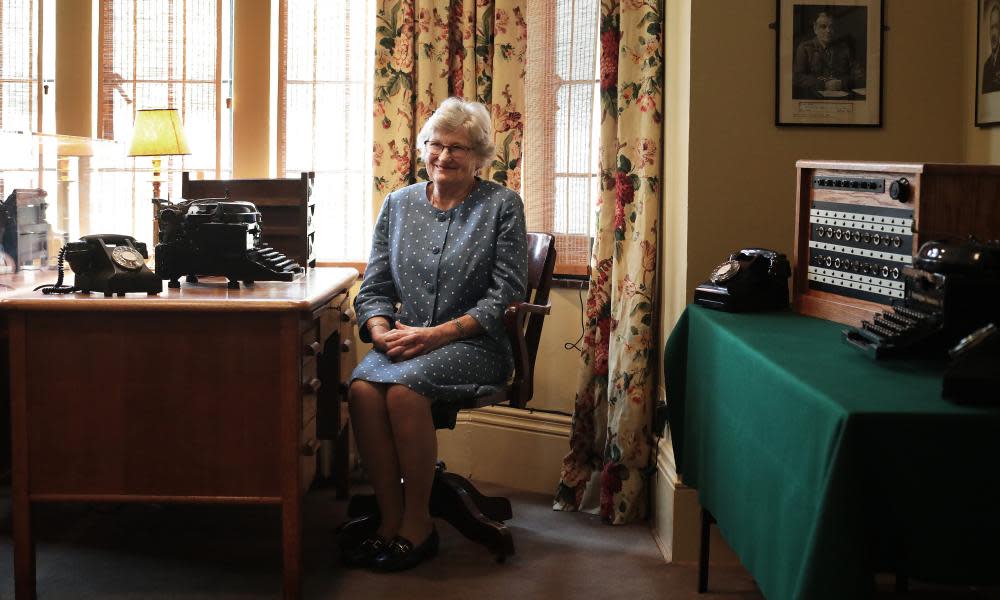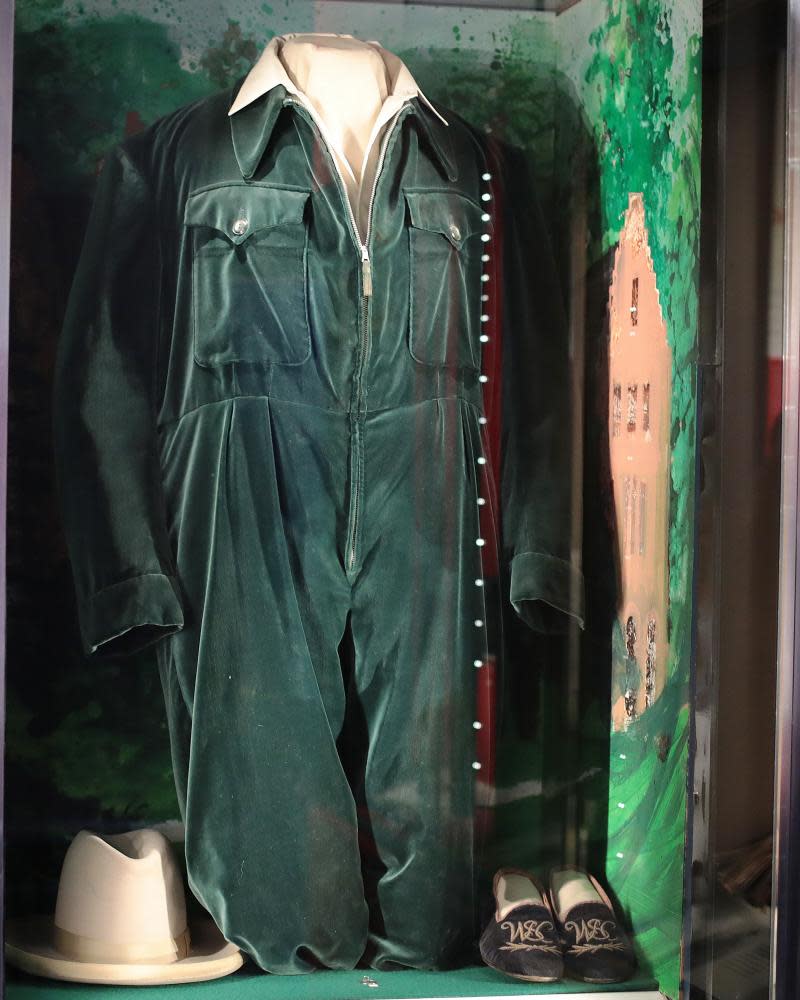'A wonderful atmosphere': Churchill secretary recalls life at Chartwell

Nonie Chapman has fond memories of Winston Churchill shuffling to the front row of his personal cinema, wearing his monogrammed slippers and a vibrant green one-piece velvet siren suit, and of course smoking a cigar.
She was a 21-year-old secretary. He was in the final years of his life. He cut a memorable figure but what she most vividly recalls are his hands. “When his cigar went out a male nurse used to go round and relight it for him and I’ll never forget his amazingly long, artistic fingers … they really struck me.”
Chapman was reminiscing to the Guardian in the newly restored secretaries’ room at Churchill’s grand country house Chartwell, in Kent. The restoration of the room is part of a £7.1m National Trust project launched in 2016 to acquire for the nation hundreds of objects and heirlooms, from personal mementoes to gifts from around the world, from the Churchill family. On Friday it was announced that the project had been successful.
The objects, which have been on long-term loan to Chartwell, include the Nobel prize for literature given to Churchill in 1953, his wooden speech box and a book signed by every member of parliament, minus Sinn Féin MPs, as a present on his 80th birthday in 1954.

Chartwell’s secretaries’ room has been recreated as it was in the 1950s with the help of photos and memories of people who worked there. Chapman is one of those, although she was less a secretary and more a general factotum at the start. “I did anything people wanted me to do … shopping, fetch people from the station, help out in the office.”
On a Friday she would take films that the family had watched to the station and collect new ones. “I’d also collect the live bait for the golden orfe,” she recalled. “Sir Winston used to feed the golden orfe.”
Chapman said it was a welcoming house and she too was invited to watch Saturday night films in the private cinema. “I remember watching Lawrence of Arabia and what was probably the first James Bond film. They were an amazing family to work for, you could go where you wanted, they were very friendly. The house had a wonderful atmosphere.”
After Churchill’s death, she was employed in London as a secretary, driver and companion to his widow, Clementine.
The new secretaries’ room has typewriters, telephones, address books and inkwells. On one wall are photographs of important political and military figures including Charles de Gaulle and Field Marshal Montgomery. On another is a map case given to Churchill as a Christmas present by President Franklin D Roosevelt in 1943.
Katherine Carter, a senior collections and house manager, said one of the star acquisitions was the Chartwell visitors’ book, which spanned the entire time the Churchills were there from the 1920s to the 1960s.
There are lots of family entries but also figures such as Charlie Chaplin, Vivien Leigh, Christabel Pankhurst and President Harry Truman. “It is a real who’s who,” Carter said.
A digital version of the book is also now available at Chartwell telling dozens of new stories thanks to the project.
“We’ve undertaken a huge amount or research,” said Carter. “There are well over 700 names in the book and when we started, 132 of them had been deemed indecipherable. Now we have all but four. It is a wonderful insight to life here that we never had before … we are so lucky to have volunteer researchers who have devoted thousands of hours to this.”

Other acquisitions include a lion sculpture given to Churchill by the people of Luxembourg, which he used to pat on his way to his office; a pair of hairbrushes made from wood from the deck of the second world war ship HMS Exeter; and a miniature paintbox.
Chartwell’s gardens have been open over the summer and the house reopens on Monday for people pre-booking tickets. Visitors will also see a dramatic redisplay of Churchill’s art studio with 141 of his paintings.
Churchill was famously a gargantuan drinker, enjoying champagne and brandy at lunch and dinner. As he got older he would drink whisky and soda through the day after breakfast, and the art studio nods to that with a decanter of a whisky and soda siphon near his easel.
Carter cautioned against judging too harshly, however. “The whisky only just covered the bottom of the glass,” she said. “It was something he began doing in India. He used to call it his mouthwash.”


